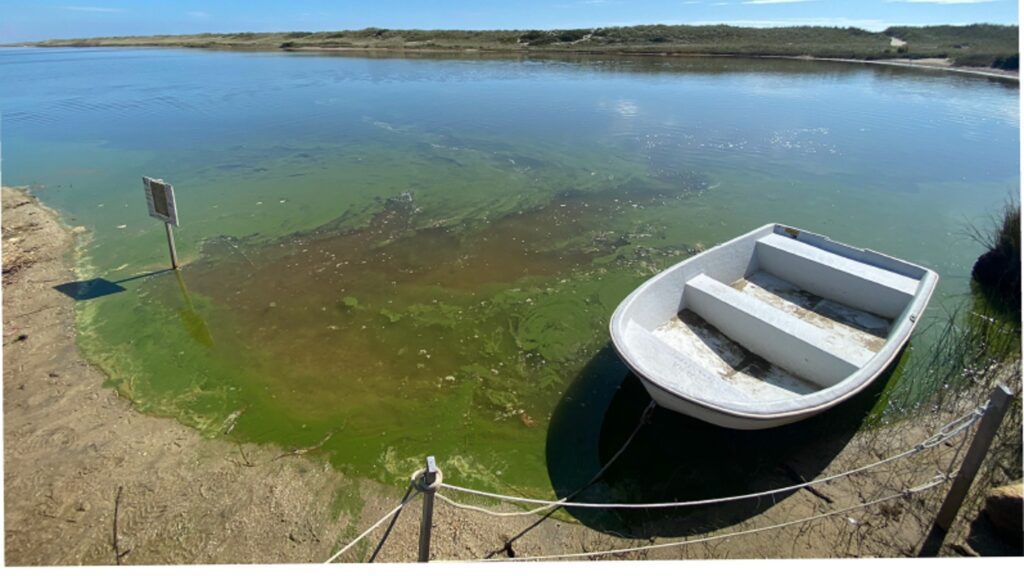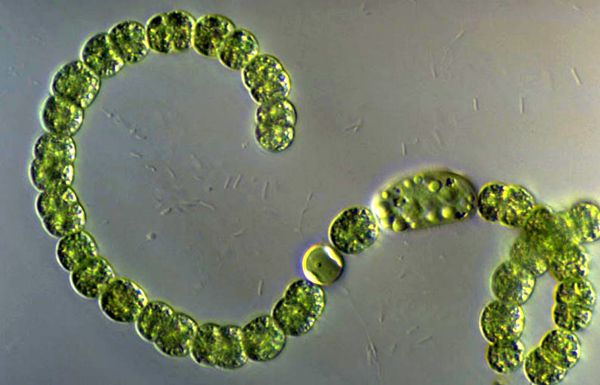Cyanobacteria Resource
What are cyanobacteria?

Cyanobacteria, a.k.a. blue-green algae, are a group of microorganisms that are ubiquitous. They are photosynthetic, similar to plants, and occupy a wide range of habitats both on land and in water. There are many types of cyanobacteria, some occurring as single cells and others forming filaments and colonies.
Cyanobacteria are found in all Vineyard ponds, in the ocean, and are a natural part of the ecosystem. However, under certain conditions these organisms can reproduce quickly, or bloom, and this can pose a risk to human, animal and environmental health.

Cyanobacterial blooms tend to occur in warm, nutrient-rich (excess phosphorus/nitrogen) waters that have a salinity less than 15 ppt (parts per thousand). In our region, blooms may occur from spring through the first ice, but they are more likely to occur during the summer months. Chilmark Pond experienced a cyanobacterial bloom in 2020 that began during the summer and could still be observed in September.
When cyanobacteria bloom, they produce cyanotoxins, which when concentrated, can cause adverse health effects in humans or pets who wade in or ingest blooming waters. Please find more in-depth answers to frequently asked questions below.

